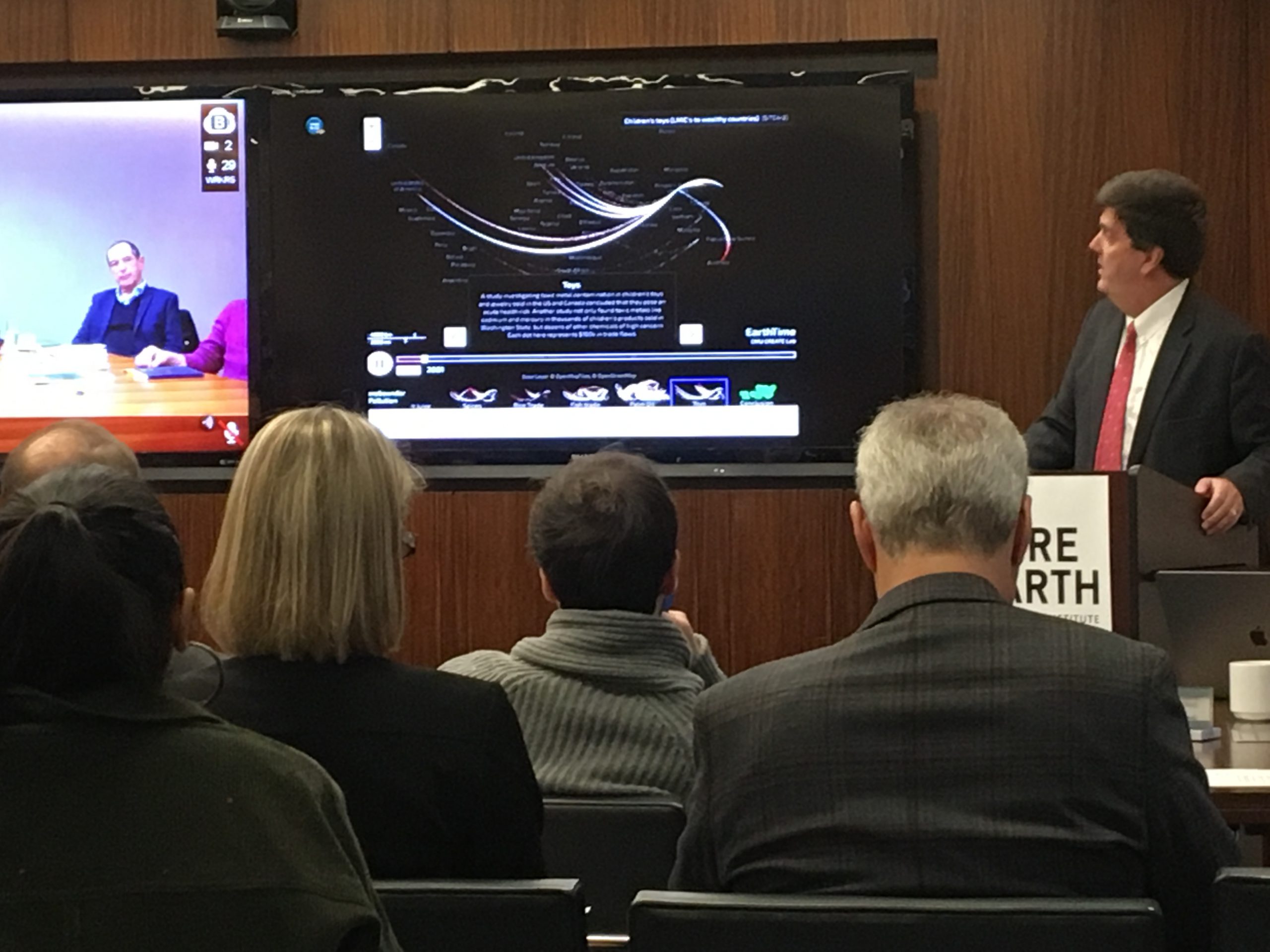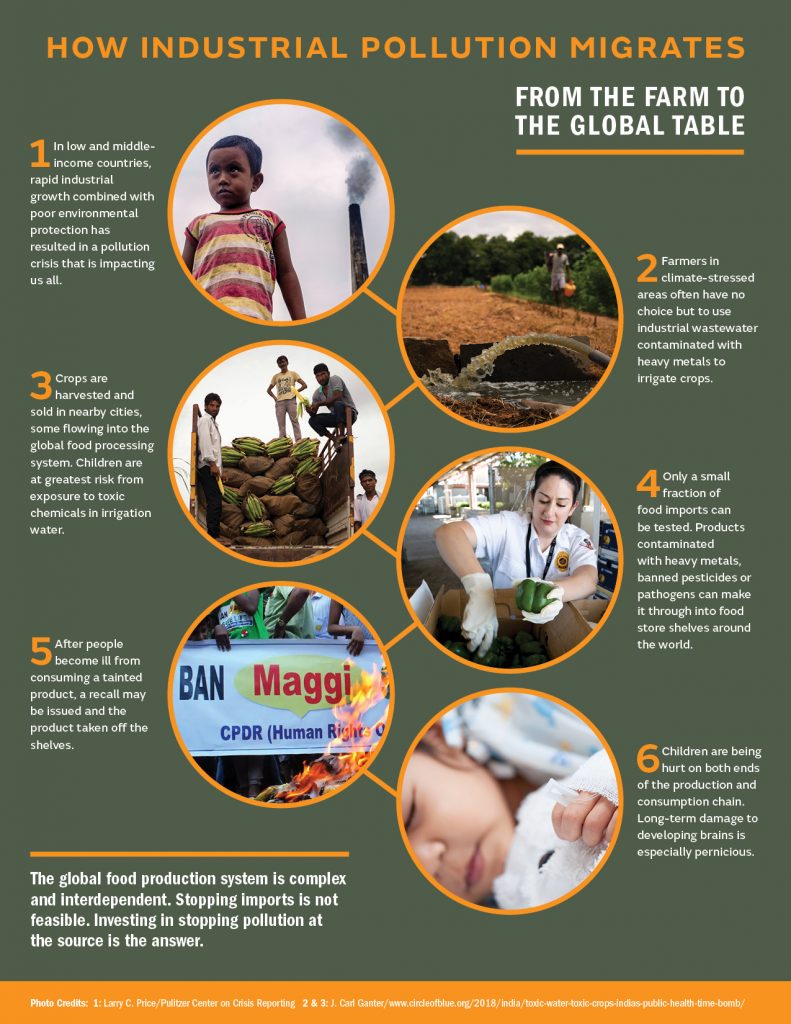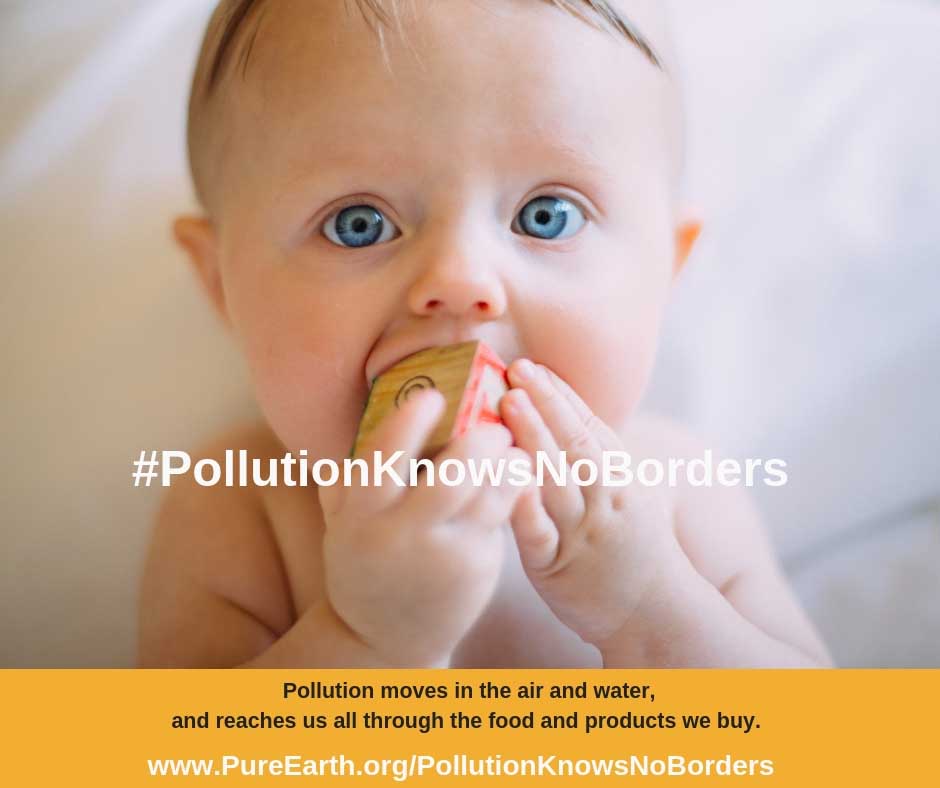If you think you and your family are not impacted by pollution far from your home, think again.
Pollution Knows No Borders, Pure Earth’s latest report, documents how the pollution crisis in low- and middle-income countries affects everyone’s health – including those living in high-income countries.
At a global briefing generously hosted by Freshfields Bruckhaus Deringer in New York City and London, the report’s authors and contributors presented findings, and importantly, solutions to this global crisis.
- Pure Earth President Richard Fuller opened the briefing and was joined by:
- Gina McCarthy, director, Center for Climate Health and the Global Environment, Harvard University, and former US EPA Administrator;
- Janez Potočnik, Co-Chair of UN Intl. Resource Panel;
- Baskut Tuncak, UN Special Rapporteur;
- J. Carl Ganter, Co-Founder & Director, Circle of Blue;
- Jack Caravanos Director of Research, Pure Earth and Clinical Professor of Environmental Public Health Sciences, New York University.
“This is not just about problems in far away places,” McCarthy reminded the crowd gathered.
The report is a “loud and clear call” for global cooperation on transboundary pollution, said Potočnik.
Although the report’s conclusions are disturbing, the event’s speakers stressed a message of solutions and hope.
Earthworms and other simple solutions
Fuller reminded the audience that there are proven, cost-effective solutions to clean up pollution, and that Pure Earth has been doing just that for the past 20 years.
He recounted some of the more innovative, simple solutions Pure Earth has piloted worldwide, including using earthworms to ingest toxins in soil in India, and planting rice that absorbs cadmium and is then repurposed into biomass for producing energy in China.
The key, Fuller told the audience, is to prevent pollution at its source.

What’s in our fish, juice, baby food, chocolates, or toys?
Fuller demonstrated the complexity and interconnectedness of our global food chain with a series of interactive data visualizations from Carnegie Mellon’s CREATE Lab that showed the movement of food and products around the world.
What’s in the food we eat and the products we use daily? It’s an amalgam of ingredients originating from a number different countries.

Simply adding border controls does not work, as companies importing food and products with toxicants above safe levels often just re-open with another name. Besides, air and water toxic transports are not stopped at a customs gate.
Instead, the solution is to encourage and help low- and middle-income countries clean up their pollution.
“Reducing pollution is the right thing to do for children growing up in these countries, and it will also safeguard the health of children in wealthier consumer nations,” said Fuller.
After the presentation, Dr. Caravanos demonstrated how Pure Earth investigators measure toxins using a handheld XRF (X-ray fluorescence) analyzer. He tested watches and jewelry handed to him by the audience (they contained mostly nickel and magnesium). A beautiful green plate bought in Spanish Harlem tested 100% lead, while a bottle of therapeutic oil tested 75% lead.
Take Action: Demand Toxic-Free Food, Water, Air, and Products
Join the worldwide movement to demand toxic-free air, water, food and product. Here’s what you can do:

SIGN THIS PETITION Signatures will be delivered to leaders at UNEA 4 in Nairobi, Kenya this March.
Read the report to learn how pollution travels, and to access resources to learn how you can protect yourself and your family.
Learn more about Pure Earth, our pollution solutions and contact Carol Sumkin, Chief Development Officer, at [email protected] on how you can partner with us and support this life-saving work.



